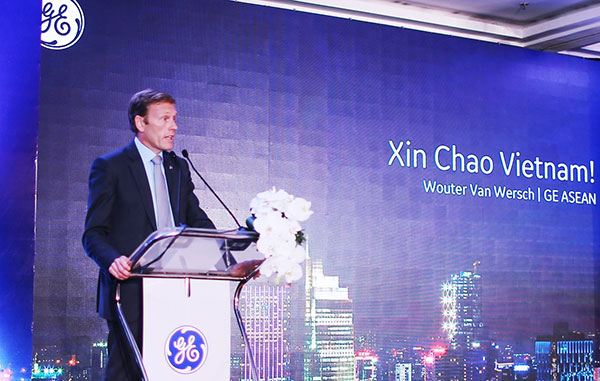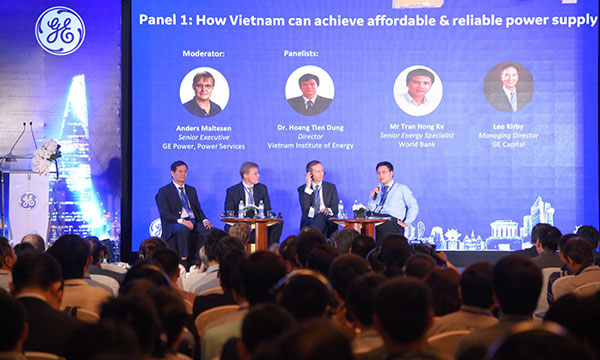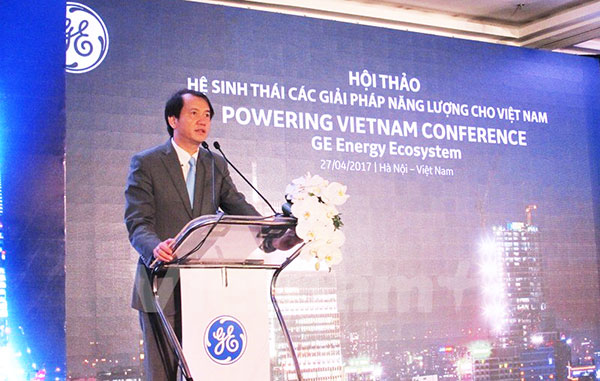GE’s Energy Ecosystem to help meet Vietnam 2030 power targets
 |
| Wouter Van Wersch, president and CEO of GE ASEAN |
Wouter Van Wersch, president and CEO of GE ASEAN kicked off GE’s Energy Ecosystem programme in Vietnam during the event and said, “We chose to launch the Energy Ecosystem portfolio in Vietnam because it is one of the most energy-hungry nations in the world and open to new ideas, and solutions, to produce more affordable, reliable and sustainable power.
“Some of the most innovative programmes available today are showcased in the ‘ecosystem’ – many have been developed with customers across the entire energy landscape. This is a strength that GE has developed globally and we look forward to helping more customers in Vietnam, and other markets, to achieve their energy goals in the future,” he said.
Highlights of Powering Vietnam conference included panel discussions, and presentations from GE business leaders on opportunities for gas, steam, and renewable energy, and how power services partnerships, new grid technologies, and digital industrial solutions can advance Vietnam’s energy modernisation plans.
 |
Insights and opinions were also provided by local sector experts, and energy representatives from the Vietnam Institute of Energy, Department of Science, Education, Natural Resources and Environment, the World Bank, the United Nations Development Program, and more. Together, they shared power development ideas and best practices with more than 300 of Vietnam’s leading industry stakeholders from the government and private sector.
Many discussions focused on new solutions to help Vietnam produce more sustainable power to meet rising demand that is predicted to grow at an average of 10.5 per cent annually during 2016–2020, and 8.0 per cent annually during 2021–2030. Electricity consumption is projected to reach 234.6 TWh in 2020 and 506.0 TWh by 2030 - a fourfold increase by 2030 compared with consumption in 2014.
 |
| Phuong Hoang Kim, deputy director of the Ministry of Industry and Trade’s General Directorate of Energy |
“The goals set out in our revised Power Master Plan VII are designed to boost energy security, diversify our energy mix, attract new investment, and ensure environmental benchmarks are met,” Phuong Hoang Kim, deputy director of the Ministry of Industry and Trade’s General Directorate of Energy said. “We understand that meeting these objectives requires support, input, and expertise from many stakeholders, and today’s Powering Vietnam event - which brings together experts from the public and private sector - is a great way to address the opportunities and challenges ahead.”
The digital industrial transformation trend discussed at the event covers increasing use of advanced software, analytics and low cost sensing converge with the Industrial Internet to reveal the hidden power of big data that seamlessly connects the ecosystem. Best practice was also shared on how digital power plant can help increase asset performance, enhance operations, and improve energy trading decisions to create additional revenue and cost reduction opportunities.
“There was enthusiastic discussion on a wide range of important topics from analysis of the world’s most efficient renewable power solutions today, to industry modernisation programmes driven by advanced digital industrial solutions,“ said Pham Hong Son, CEO of GE Vietnam.
Decentralisation was another important topic where speakers discussed the shift from power generation towards generation closer to the point of consumption. There was also strong interest in the latest lower or non-emitting CO2 energy producing technologies to help developing markets like Vietnam upgrade aging infrastructure to save costs and meet emissions standards.
“And as Vietnam is poised to ramp-up the development of energy infrastructure in the next five-10 years, there was high interest in financing options offered by GE including early stage capital formation and access to third party capital and from export credit agencies, development financing institutions, and other institutions,“ Son added.
What the stars mean:
★ Poor ★ ★ Promising ★★★ Good ★★★★ Very good ★★★★★ Exceptional
Latest News
More News
- Addressing Vietnam's energy challenges with aeroderivative gas turbines (February 28, 2023 | 09:33)
- How to sprint ahead in 2023’s worldwide energy priorities (February 08, 2023 | 13:55)
- Boosting Vietnam's grid stability through gas turbine technology (November 22, 2022 | 20:02)
- Healthcare trio collaborates to provide thousands of free breast scans (October 27, 2022 | 17:19)
- GE Healthcare's vision for AI-backed radiology (September 29, 2022 | 11:53)
- GE brand trio to shape the future of key industries (July 19, 2022 | 15:35)
- GE unveiling brand names and defining future (July 19, 2022 | 15:16)
- GE: the shortest route towards sustainability (July 18, 2022 | 08:00)
- Be proactive in an uncertain world (May 20, 2022 | 11:40)
- GE secures first 9HA combined cycle power plant order in Vietnam (May 16, 2022 | 17:06)

















 Mobile Version
Mobile Version